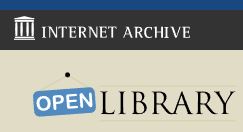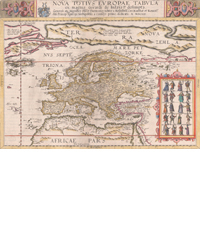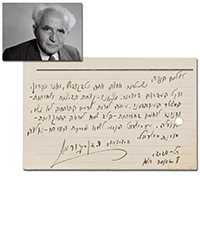In a major legal ruling pitting copyright protections against open access to books, the copyright interests have prevailed. The interests of copyright protection was represented by a group of four publishers, Hachette, HarperCollins, John Wiley, and Penguin Random House. On the other side was the Internet Archive and its Open Library. The publishers won. The Internet Archive will appeal.
The source of this dispute is the Online Library created by the Internet Archive. The Internet Archive is a non-profit dedicated to preserving history. They are most known for their Wayback Machine, that has preserved countless past views of the internet and preserved them for history. If you want to know what a website looked like several years ago, you can access the Wayback Machine and it will show that site on certain specified dates in the past. It's a caution against thinking you can erase all traces of your online past by deleting what is visible today.
The Internet Archive has also been copying complete books and creating digital copies. What it does is sort of like Google Books, and sort of like e-books you borrow from your local library, but also fundamentally different. Google also copies books and makes those scanned digital copies available free to the public, but they do not make books published more recently than 95 years ago available. That is the safe date to be certain the book is no longer under copyright. Google will make short “snippets” from the book available for more recent titles, something generally acknowledged as being “fair use,” but no more. On the other hand, your local library will make the entire electronic book available to you. However, these are not digitally scanned copies but copies created digitally from the start, and they pay the publishers for the right to lend these copies. The Internet Library does neither. It does make books available that are still under copyright protection (though nothing published more recently than five years ago), but does not pay the publishers a fee for their use.
What the Internet Archive does is to scan their physical copy of the book and make that available to the public for free. Since copying a copyrighted work is generally a violation of that copyright, why do they think this is legal? Their argument is that they are essentially doing the same thing as a regular library does with physical books – legally obtaining them, either through purchase or gift, and lending digital copies of those legally obtained books to the public. To keep it like a regular library, they only lend as many copies as they have of a book at one time. For example, if they have one physical copy of a book, they will lend no more than one digital copy at a time. It must be “returned” (access cancelled) before a digital copy will be loaned to another patron. If they have five copies, they will lend up to five copies at a time. They keep the original copies in storage as opposed to discarding them to maintain the requirements of acting like a traditional library. The only difference is they lend out a digital scan of the book they own rather than the physical book itself, the only practical way of reaching a much larger audience, particularly those far away from a physical library. It's a useful service.
So here is the conflict – on one side are the authors and publishers who have a right to profit from their work, versus the rule by which libraries exist, called “first sale,” that says once you buy a book, it is yours to do as you please (short of violating copyrights). You can sell it or lend it to your friends and the author or publisher cannot stop you, even if they would prefer your friend buy their own copy. However, copyright law usually prevents copying it. This takes us back to the “fair use” exception which provides guidelines as to when is copying legal “fair use,” and when is it illegal copyright infringement.
“Fair use” is determined by a set of rules that are subject to different interpretations, which is why we have disputes such as this. It involves factors such as how much is copied, is it for useful, non-profit reasons or commercial ones, what is the impact on the creators of the work, and is it a “transformative” use, that is, is the copy in fact something new and different from the original.
For example, the Internet Archive argued their copy was “transformative” because it made it available in a new way, and to more people. The publishers argued no, it was the same book, not something like a book review with a few quotes but essentially something different. You couldn't substitute a book review for the book, but you could substitute a digital copy for a printed one and still have essentially the same book.
While the court uses the various factors in its opinion, it is so one-sided that one imagines the judge looked at the situation, determined the publishers/writers were in the right, and wrote his opinion accordingly. The predictable split between conservative and liberal judges is a sign this happens all the time.
At the moment, copyright supporters hold sway. The length of copyright protections has been increased many times. The original copyright law in America, passed in 1790, provided for 14 years with eligibility to renew for another 14 years. Today, it is for the life of the author plus another 70 years, or for corporations, 95 years. Much of this came about at the behest of the Walt Disney Company that wanted to protect its copyright of the now very aged Mickey Mouse. That's a heck of a reason to determine the length of copyrights (one might say a Mickey Mouse justification).
That leads to the question more important than this particular case – what exactly should copyright law protect? To answer that question, we need to understand the purpose of copyrights. It is not to protect the financial interests of authors or publishers. It is, perhaps, more aligned with the Internet Archive's purpose. It is to enhance the spread of knowledge. That is why it is in the Constitution. However, the framers also understood that writers needed to be paid to write, so if they could not protect their financial interests from copying, they simply would not write books. Hence, copyrights are necessary to create and spread knowledge.
Based on that, the current life plus 70 years is absurd. What writer would refuse to write because their heirs will only be able to make money from those books for, say, 50 years after they die rather than 70? None. When Disney created Mickey Mouse, it was only 28 years plus one 28 year renewal. He almost outlived his copyright himself, let alone providing 70 years for his heirs, yet he created Mickey Mouse anyway.
Another factor is how knowledge is spread these days. It is no longer through the inefficient method of a big library with lots of physical books on stacks you can pull out, thumb through, and see if it has what you need. It is done by searching various digital sources, from the internet, databases, and such. It allows researchers to access not only huge volumes of material, but to search through it in a matter of seconds. The idea of searching the old way, book by book, library by library, for different books is absurd in the digital age. It's nice that OCLC now lets you determine which libraries have what you seek, but for an obscure title, the nearest library might be 2,000 miles away and you don't even know whether, as a nonmember, they will let you read the book when you get there. Besides which, digital searching allows you to access books you never would have thought to look through. You just can't do research the old way any more.
Still, the original purpose of copyrights, to encourage authors to write, is as important today as it was in 1790. My parents wrote school books and they did not do it for the fun of it. It was work. It is a difficult challenge to meet both needs and I don't pretend to have the answer. What I can say is the present law makes little sense today and is counterproductive to the purpose of copyrights, to enhance the spread of knowledge.


































![<b>Swann, Apr. 22:</b> Lot 124: Henri Courvoisier-Voisin, et alia, <i>[Recueil de Vues de Paris et ses Environs],</i> depicting precursors of the modern roller coaster, Paris, [1814-1819?]. $2,000 to $3,000. Swann, Apr. 22: Lot 124: Henri Courvoisier-Voisin, et alia, [Recueil de Vues de Paris et ses Environs], depicting precursors of the modern roller coaster, Paris, [1814-1819?]. $2,000 to $3,000.](https://ae-files.s3.amazonaws.com/AdvertisementPhotos/926a6773-03fc-4628-84a8-b9c0bad3ca15.jpg)

















